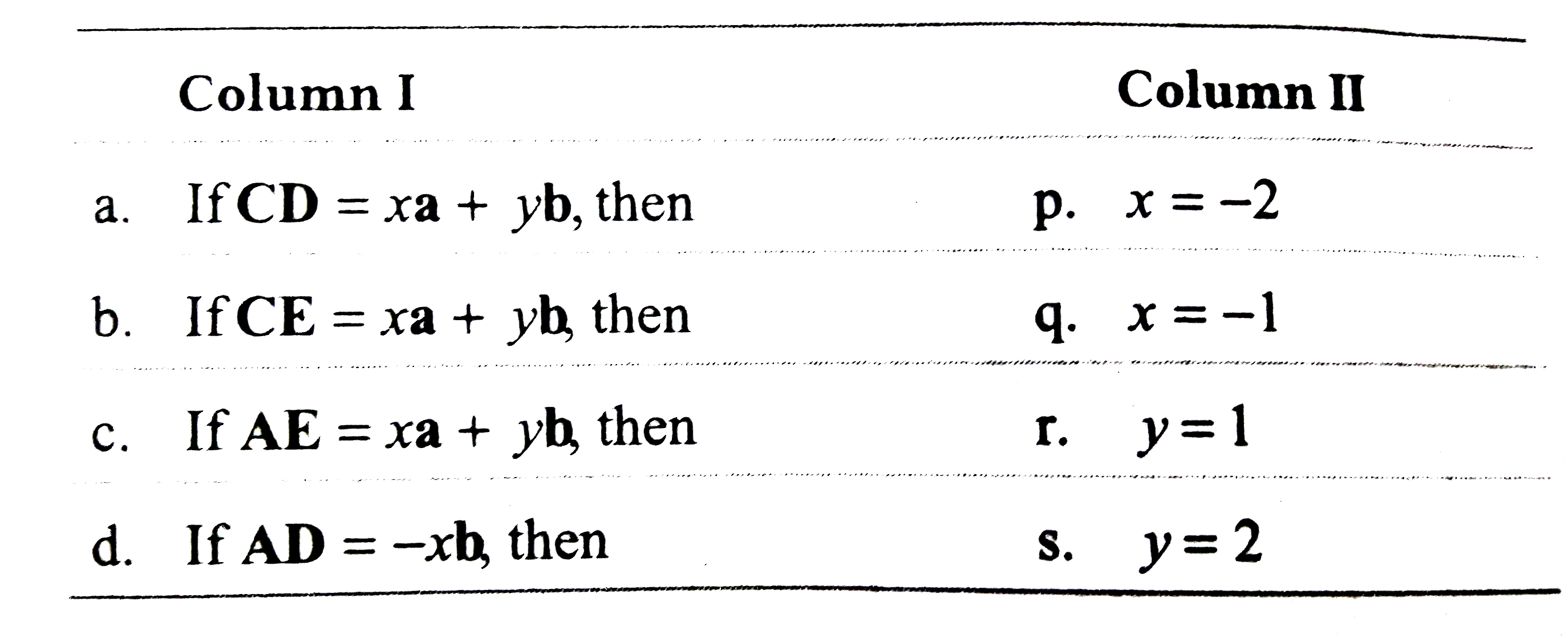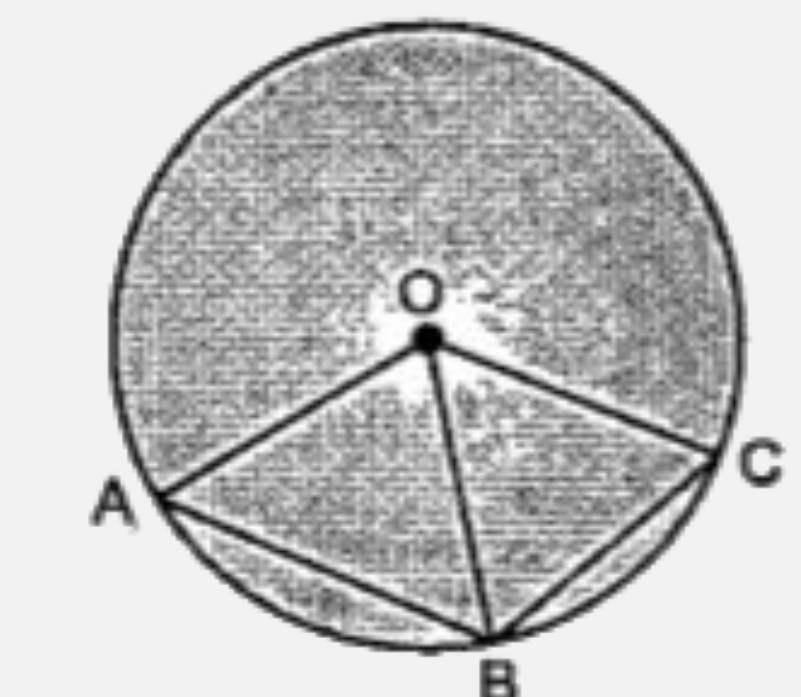If a and b are the vectors AB and BC determined by the adjacent sides of a ragular hexagon. What are the vectors determined by the other sides taken is order?
To solve the problem, we need to determine the vectors corresponding to the sides of a regular hexagon, given that vectors a and b represent the vectors −−→AB and −−→BC respectively.
1. Understanding the Hexagon Structure:
- A regular hexagon has six sides and can be visualized with vertices labeled as A,B,C,D,E,F.
- The sides of the hexagon can be represented as vectors based on the adjacent vertices.
2. Given Vectors:
- Let −−→AB=a and −−→BC=b.
3. Finding Vector −−→CD:
- The vector −−→CD is parallel to −−→AB but in the opposite direction. Therefore:
−−→CD=−a
4. Finding Vector −−→DE:
- The vector −−→DE is parallel to −−→BC but in the opposite direction. Hence:
−−→DE=−b
5. Finding Vector −−→EF:
- The vector −−→EF is parallel to −−→CD but in the opposite direction. Thus:
−−→EF=−−−→CD=−(−a)=a
6. Finding Vector −−→FA:
- The vector −−→FA is parallel to −−→DE but in the opposite direction. Therefore:
−−→FA=−−−→DE=−(−b)=b
7. Finding Vector −−→AC:
- The vector −−→AC can be expressed as the sum of −−→AB and −−→BC:
−−→AC=a+b
Summary of Vectors:
- −−→AB=a
- −−→BC=b
- −−→CD=−a
- −−→DE=−b
- −−→EF=a
- −−→FA=b
Final Answer:
The vectors determined by the other sides of the hexagon taken in order are:
1. −−→CD=−a
2. −−→DE=−b
3. −−→EF=a
4. −−→FA=b
- A regular hexagon has six sides and can be visualized with vertices labeled as A,B,C,D,E,F.
- The sides of the hexagon can be represented as vectors based on the adjacent vertices.
- Let −−→AB=a and −−→BC=b.
- The vector −−→CD is parallel to −−→AB but in the opposite direction. Therefore:
−−→CD=−a
- The vector −−→DE is parallel to −−→BC but in the opposite direction. Hence:
−−→DE=−b
- The vector −−→EF is parallel to −−→CD but in the opposite direction. Thus:
−−→EF=−−−→CD=−(−a)=a
- The vector −−→FA is parallel to −−→DE but in the opposite direction. Therefore:
−−→FA=−−−→DE=−(−b)=b
- The vector −−→AC can be expressed as the sum of −−→AB and −−→BC:
−−→AC=a+b
- −−→AB=a
- −−→BC=b
- −−→CD=−a
- −−→DE=−b
- −−→EF=a
- −−→FA=b
The vectors determined by the other sides of the hexagon taken in order are:
1. −−→CD=−a
2. −−→DE=−b
3. −−→EF=a
4. −−→FA=b
Topper's Solved these Questions
- VECTORSBook:DC PANDEY ENGLISHChapter:VECTORSExercise:Exercise 5.1
Explore 5 Videos
- VECTORSBook:DC PANDEY ENGLISHChapter:VECTORSExercise:Exercise 5.2
Explore 4 Videos
- UNITS, DIMENSIONS & ERROR ANALYSIS Book:DC PANDEY ENGLISHChapter:UNITS, DIMENSIONS & ERROR ANALYSIS Exercise:Medical entrances gallery
Explore 32 Videos
- WAVE MOTIONBook:DC PANDEY ENGLISHChapter:WAVE MOTIONExercise:Integer Type Question
Explore 11 Videos
Similar Questions
If a and b are the vectors AB and BC determined by the adjacent sides of a regular hexagon. What are the vectors determined by the other sides taken is order?
View SolutionIf →aand→b are the vectors determined by two adjacent sides of a regular hexagon, what are the vectors determined by the other sides taken in order?
View SolutionIf →aand→b are the vectors determined by two adjacent sides of a regular hexagon ABCDEF, find the vector determined by the ther sides taken in order. Also find −−→ADand−−→CE in terms of →aand→b.
View Solutiona and b form the consecutive sides of a regular hexagon ABCDEF.

View SolutionGive a condition that three vectors →a,→b and →c from the three sides of a triangle. What are the other possibilities?
View SolutionGive a condition that three vectors →a,→b and →c from the three sides of a triangle. What are the other possibilities?
View SolutionThree coinitial vectors of magnitudes a, 2a and 3a meet at a point and their directions are along the diagonals if three adjacent faces if a cube. Determined their resultant R. Also prove that the sum of the three vectors determinate by the diagonals of three adjacent faces of a cube passing through the same corner, the vectors being directed from the corner, is twice the vector determined by the diagonal of the cube.
View SolutionIf →a, →b are the vectors forming consecutive sides of a regular of a regular hexagon ABCDEF, then the vecrtor representing side CD is
a.→a+→b b. →a−→b c. →b−→a d. −(→a+→b)
View SolutionIf →a and →b represent two adjacent sides of a parallel then write vectors representing its diagonals.
View SolutionIn the given AB is a side of regular pentagon and BC is a side of regular hexagon.

∠OBC
View Solution

